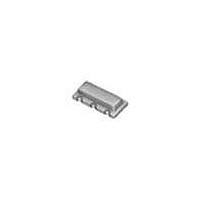CSTCR6M00G53-R0 Murata, CSTCR6M00G53-R0 Datasheet - Page 11

CSTCR6M00G53-R0
Manufacturer Part Number
CSTCR6M00G53-R0
Description
Resonators 6.00MHz 0.5%
Manufacturer
Murata
Series
CSTCR-Gr
Datasheets
1.CSTCW20M0X53-R0.pdf
(32 pages)
2.CSTCE20M0V53-R0.pdf
(1 pages)
3.CSTCC2M00G56-R0.pdf
(21 pages)
4.CSTCR6M00G53-R0.pdf
(8 pages)
Specifications of CSTCR6M00G53-R0
Tolerance
0.5 %
Termination Style
SMD/SMT
Operating Temperature Range
- 20 C to + 80 C
Dimensions
2 mm W x 4.5 mm L x 1.5 mm H
Frequency Stability
0.2 %
Frequency
6 MHz
Lead Free Status / RoHS Status
Lead free / RoHS Compliant
Available stocks
Company
Part Number
Manufacturer
Quantity
Price
Company:
Part Number:
CSTCR6M00G53-R0
Manufacturer:
MURATA
Quantity:
9 000
Generally, basic oscillation circuits can be grouped into
the following 3 categories.
① Use of positive feedback
② Use of negative resistance element
③ Use of delay in transfer time or phase
In the case of ceramic resonators, quartz crystal
oscillators, and LC oscillators, positive feedback is the
circuit of choice.
Among the positive feedback oscillation circuit using an
LC, the tuning type anti-coupling oscillation circuit,
Colpitts and Hartley circuits are typically used.
See Fig. 2-6.
In Fig. 2-6, a transistor, which is the most basic
amplifier, is used.
The oscillation frequencies are approximately the same
as the resonance frequency of the circuit consisting of L,
C
and L
represented by the following formulas. (Refer to Note 3
on page 11.)
In an LC network, the inductor is replaced by a ceramic
resonator, taking advantage of the fact that the
resonator becomes inductive between resonant and anti-
resonant frequencies.
This is most commonly used in the Colpitts circuit.
The operating principle of these oscillation circuits can
be seen in Fig. 2-7. Oscillation occurs when the
following conditions are satisfied.
In Colpitts circuit, an inverter of θ
it is inverted more than θ
feedback circuit. The operation with a ceramic resonator
can be considered the same.
(Colpitts Circuit)
fosc. =
(Hartley Circuit)
fosc. =
2. Basic Oscillation Circuits
Note
L1
and C
Loop Gain G = α・β ≧ 1
Phase Amount
• Please read rating and
• This catalog has only typical specifications because there is no space for detailed specifications. Therefore, please review our product specifications or consult the approval sheet for product specifications before ordering.
2
in the Hartley circuit. These frequencies can be
θ = θ
L2
in the Colpitts circuit or consisting of L
1
1
+ θ
C
1
C
L1
L1
CAUTION (for storage, operating, rating, soldering, mounting and handling) in this catalog to prevent smoking and/or burning, etc.
2
+ C
· C
= 360°×n (n = 1, 2,…)
L2
L2
2
= 180° with L and C in the
1
= 180° is used, and
1
(2-4)
(2-5)
(2-6)
Fig. 2-6 Basic Configuration of LC Oscillation Circuit
Colpitts Circuit
Principles of CERALOCK
C
L1
Fig. 2-7 Principle of Oscillation
L
C
L2
Amplifier
Feedback Circuit
Feedback Ratio :
Phase Shift :
1
2
Oscillation Conditions
Loop Gain G= α · β ≧ 1
Phase Shift θ = θ
Hartley Circuit
L
1
C
L
2
1
+ θ
2
=360°×n
®
2
9
P17E.pdf
SEP.16,
2011
2













